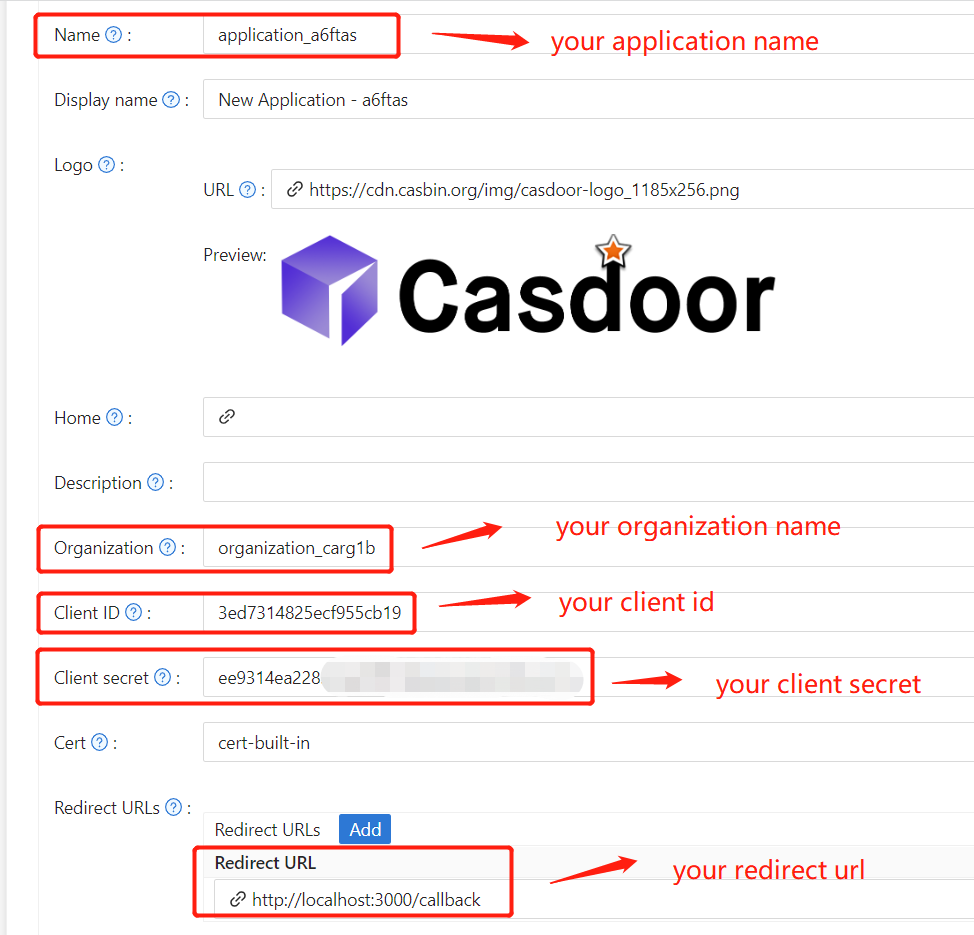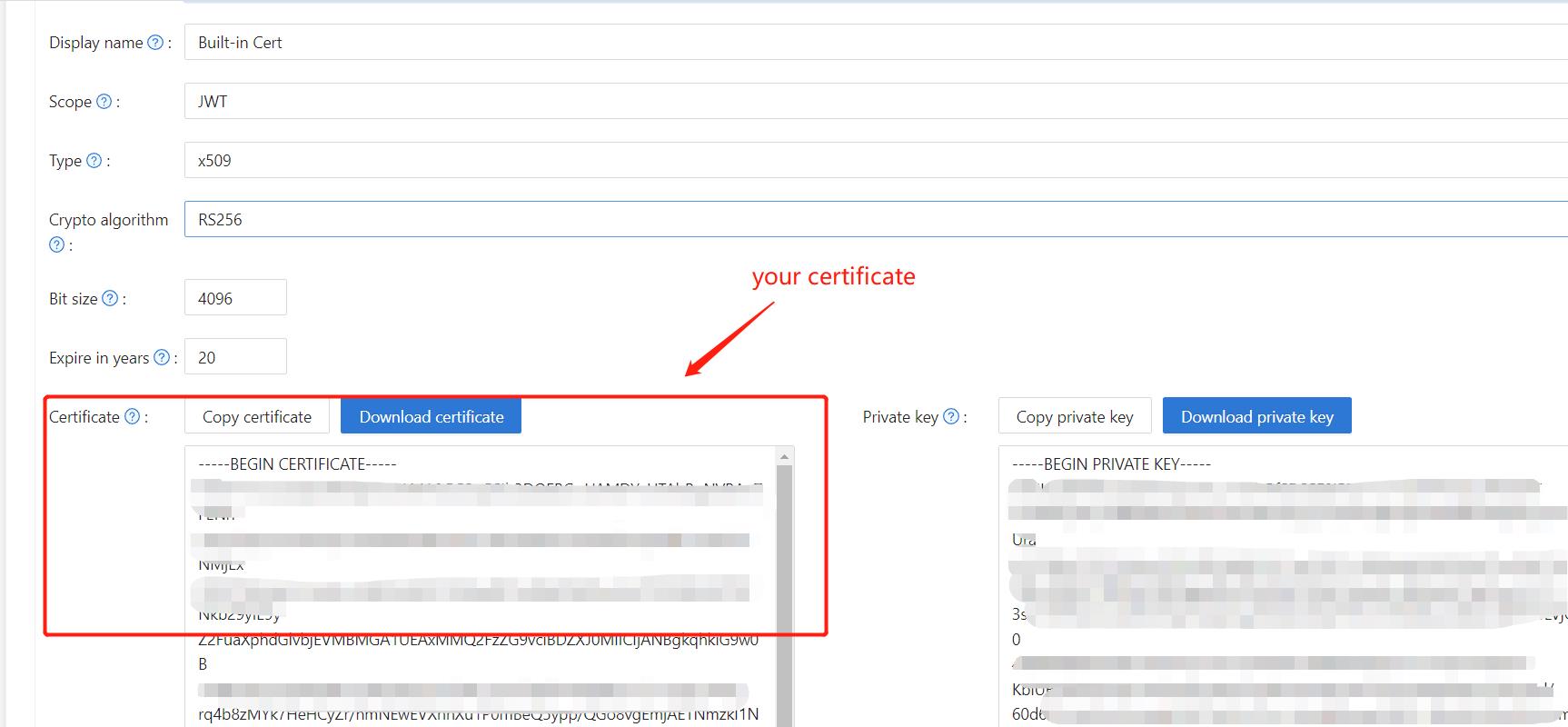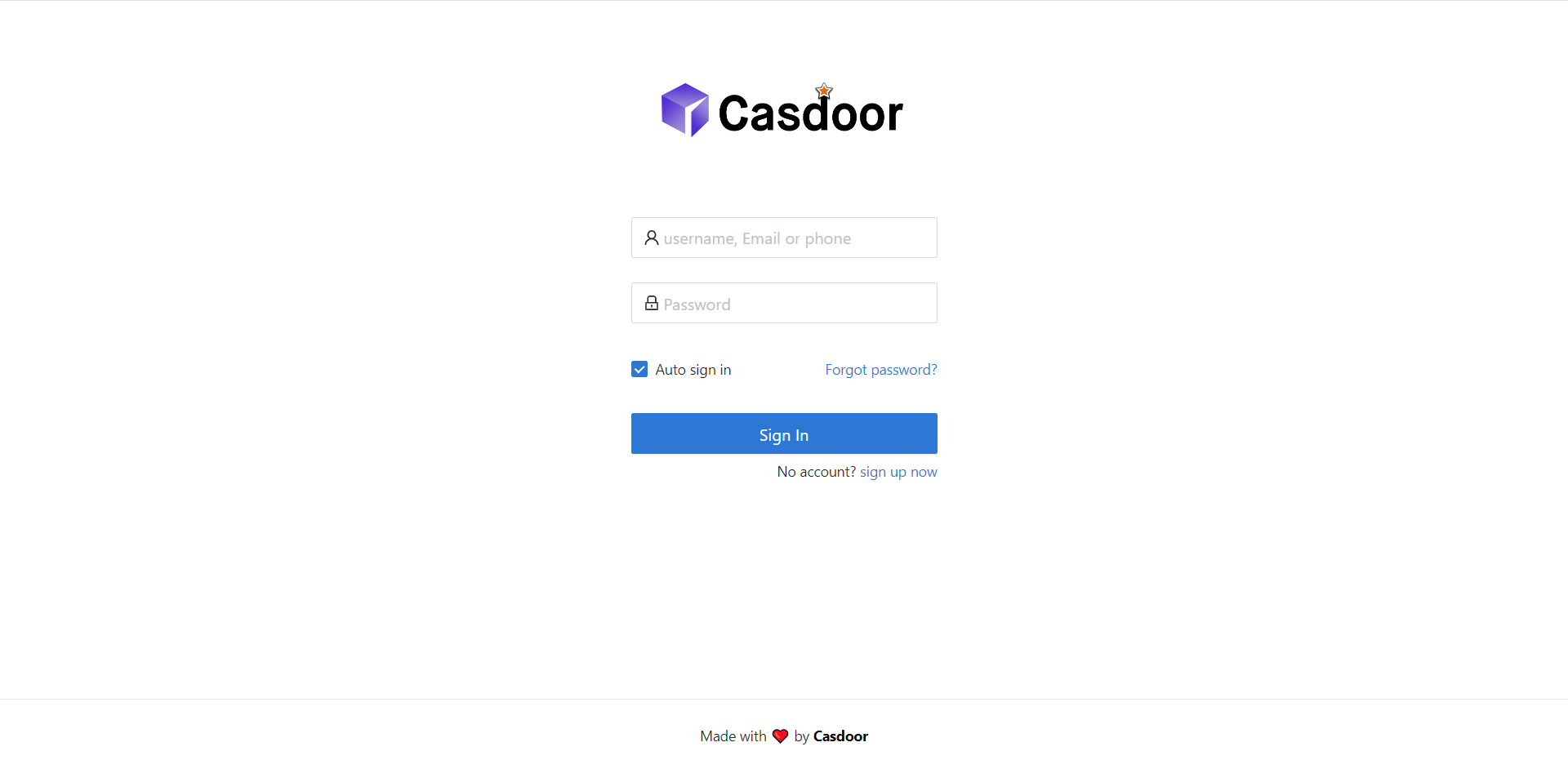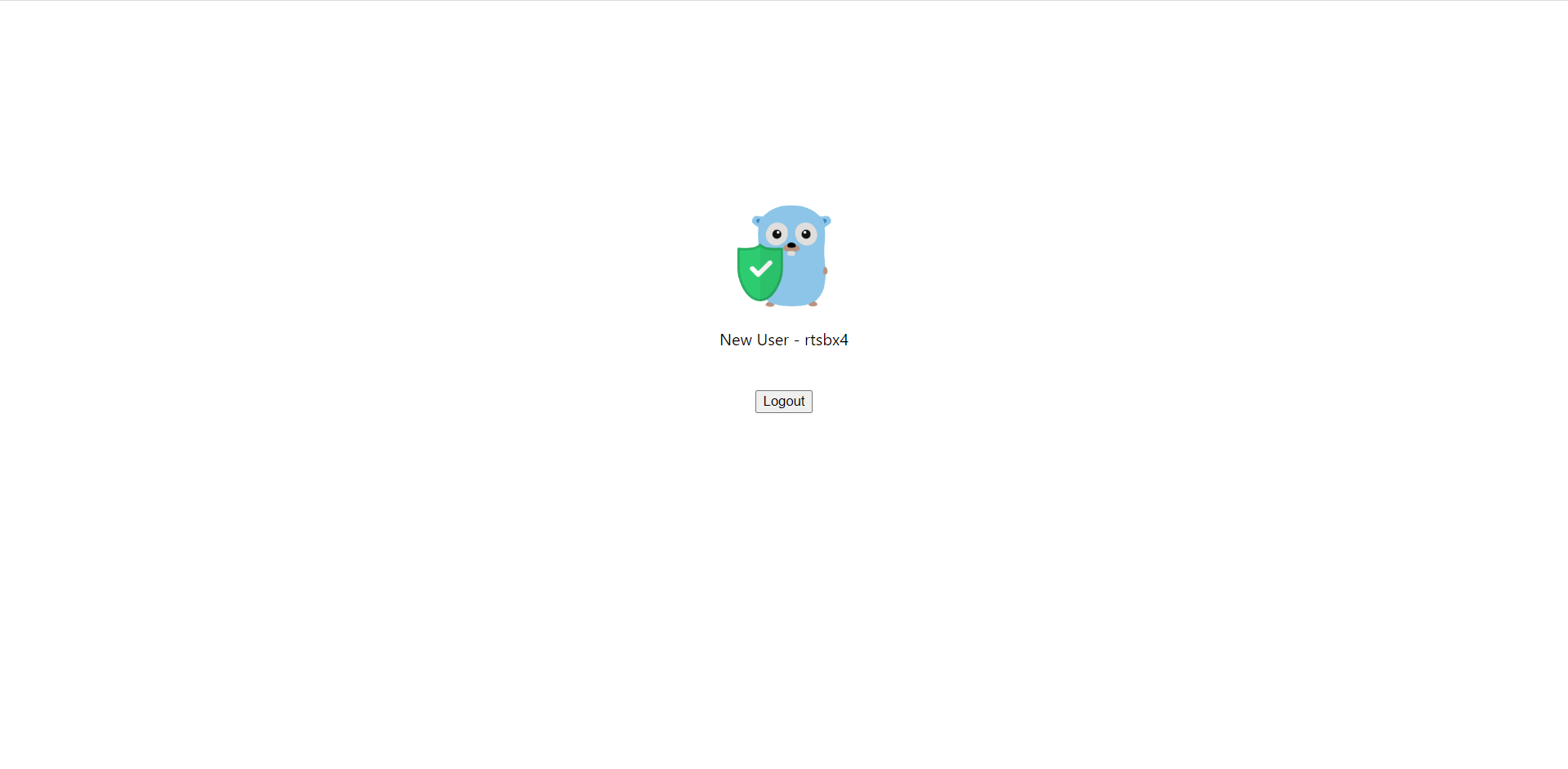Spring Security Filter with OIDC integration for Casdoor
Casdoor is an open-source IDP that supports OIDC and various other protocols. In this article, we will see how to integrate Casdoor with your application using Spring Security Filter and OIDC.
Step 1: Deploy Casdoor
First, you need to deploy the Casdoor server. Refer to the official documentation for server installation instructions. After successful deployment, ensure that:
- The Casdoor server is running at http://localhost:8000.
- You can see the Casdoor login page at http://localhost:7001.
- You can test the login functionality by logging in with the credentials
adminand123.
After verifying these steps, follow the steps below to integrate Casdoor with your application.
Step 2: Configure Casdoor Application
- Create a new Casdoor application or use an existing one.
- Add your redirect URL. You can find more information about obtaining the redirect URL in the next section.

- Obtain your
Certificateon the certificate editing page.
- Add the provider and other settings as needed.
You can obtain the values for Application Name, Organization Name, Redirect URL, Client ID, Client Secret, and Certificate on the application settings page. We will use them in the next step.
Step 3: Configure Spring Security
You can customize the settings of the Spring Security filters to process tokens:
Make sure you replace the configuration values with your own Casdoor instance, especially <Client ID> and the others.
server:
port: 8080
casdoor:
endpoint: http://CASDOOR_HOSTNAME:8000
client-id: <Client ID>
client-secret: <Client Secret>
certificate: <Certificate>
organization-name: <Organization Name>
application-name: <Application Name>
redirect-url: http://FRONTEND_HOSTNAME/callback
For frontend applications, the default value of <FRONTEND_HOSTNAME> is localhost:3000. In this demo, the redirect URL is http://localhost:3000/callback. Make sure to configure this in your casdoor application.
Step 4: Configure Frontend
You need to install casdoor-js-sdk and configure the SDK as follows:
Install
casdoor-js-sdk.npm i casdoor-js-sdk
# or
yarn add casdoor-js-sdkSet up
SDK.import Sdk from "casdoor-js-sdk";
// Serverurl is the URL where spring security is deployed
export const ServerUrl = "http://BACKEND_HOSTNAME:8080";
const sdkConfig = {
serverUrl: "http://CASDOOR_HOSTNAME:8000",
clientId: "<your client id>",
appName: "<your application name>",
organizationName: "<your organization name>",
redirectPath: "/callback",
};
export const CasdoorSDK = new Sdk(sdkConfig);
Step 5: Set Up a Demo
Create a Spring Boot application.
Add some configurations to handle JWT.
@EnableWebSecurity
public class SecurityConfig {
private final JwtTokenFilter jwtTokenFilter;
public SecurityConfig(JwtTokenFilter jwtTokenFilter) {
this.jwtTokenFilter = jwtTokenFilter;
}
@Bean
public SecurityFilterChain securityFilterChain(HttpSecurity http) throws Exception {
// enable CORS and disable CSRF
http = http.cors(corsConfig -> corsConfig
.configurationSource(configurationSource())
).csrf().disable();
// set session management to stateless
http = http
.sessionManagement()
.sessionCreationPolicy(SessionCreationPolicy.STATELESS)
.and();
// set permissions on endpoints
http.authorizeHttpRequests(authorize -> authorize
.mvcMatchers("/api/redirect-url", "/api/signin").permitAll()
.mvcMatchers("/api/**").authenticated()
);
// set unauthorized requests exception handler
http = http
.exceptionHandling()
.authenticationEntryPoint(
(request, response, ex) -> ResponseUtils.fail(response, "unauthorized")
)
.and();
// add JWT token filter
http.addFilterBefore(
jwtTokenFilter,
UsernamePasswordAuthenticationFilter.class
);
return http.build();
}
// ...
}Add a simple JWT filter to intercept requests that require token verification.
@Component
public class JwtTokenFilter extends OncePerRequestFilter {
private final CasdoorAuthService casdoorAuthService;
public JwtTokenFilter(CasdoorAuthService casdoorAuthService) {
this.casdoorAuthService = casdoorAuthService;
}
@Override
protected void doFilterInternal(HttpServletRequest request,
HttpServletResponse response,
FilterChain chain)
throws ServletException, IOException {
// get authorization header and validate
final String header = request.getHeader(HttpHeaders.AUTHORIZATION);
if (!StringUtils.hasText(header) || !header.startsWith("Bearer ")) {
chain.doFilter(request, response);
return;
}
// get jwt token and validate
final String token = header.split(" ")[1].trim();
// get user identity and set it on the spring security context
UserDetails userDetails = null;
try {
CasdoorUser casdoorUser = casdoorAuthService.parseJwtToken(token);
userDetails = new CustomUserDetails(casdoorUser);
} catch (CasdoorAuthException exception) {
logger.error("casdoor auth exception", exception);
chain.doFilter(request, response);
return;
}
UsernamePasswordAuthenticationToken authentication = new UsernamePasswordAuthenticationToken(
userDetails,
null,
AuthorityUtils.createAuthorityList("ROLE_casdoor")
);
authentication.setDetails(
new WebAuthenticationDetailsSource().buildDetails(request)
);
SecurityContextHolder.getContext().setAuthentication(authentication);
chain.doFilter(request, response);
}
}When the user accesses the interface requiring authentication,
JwtTokenFilterwill obtain the token from the request headerAuthorizationand verify it.Define a
Controllerto handle when the user logs in to Casdoor. After the user logs in, they will be redirected to the server and carry thecodeandstate. The server then needs to verify the user's identity from Casdoor and obtain thetokenthrough these two parameters.@RestController
public class UserController {
private static final Logger logger = LoggerFactory.getLogger(UserController.class);
private final CasdoorAuthService casdoorAuthService;
// ...
@PostMapping("/api/signin")
public Result signin(@RequestParam("code") String code, @RequestParam("state") String state) {
try {
String token = casdoorAuthService.getOAuthToken(code, state);
return Result.success(token);
} catch (CasdoorAuthException exception) {
logger.error("casdoor auth exception", exception);
return Result.failure(exception.getMessage());
}
}
// ...
}
Step 6: Try the Demo
You can access the frontend application through your browser. If you are not logged in, you will see a login button. Click on it, and you will be redirected to the Casdoor login page.
If you visit your root page,

Click the Casdoor Login button, and the page will redirect to Casdoor's login page.

After logging in, you will be redirected to /.
